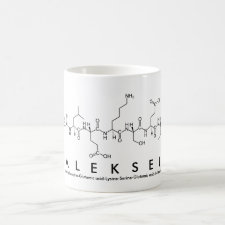
Authors: Boroznjak R, Reut J, Tretjakov A, Lomaka A, Ípik A, Syritski V
Article Title: A computational approach to study functional monomer-protein molecular interactions to optimize protein molecular imprinting.
Publication date: 2017
Journal: Journal of Molecular Recognition
Volume: 30
Issue: (10)
Page numbers: ArticleNoe2635.
DOI: 10.1002/jmr.2635
Abstract: Molecular imprinting has become a promising approach for synthesis of polymeric materials having binding sites with a predetermined selectivity for a given analyte, the so-called molecularly imprinted polymers (MIPs), which can be used as artificial receptors in various application fields. Realization of binding sites in a MIP involves the formation of prepolymerization complexes between a template molecule and monomers, their subsequent polymerization, and the removal of the template. It is believed that the strength of the monomer-template interactions in the prepolymerization mixture influences directly on the quality of the binding sites in a MIP and consequently on its performance. In this study, a computational approach allowing the rational selection of an appropriate monomer for building a MIP capable of selectively rebinding macromolecular analytes has been developed. Molecular docking combined with quantum chemical calculations was used for modeling and comparing molecular interactions among a model macromolecular template, immunoglobulin G (IgG), and 1 of 3 electropolymerizable functional monomers: m-phenylenediamine (mPD), dopamine, and 3,4-ethylenedioxythiophene, as well as to predict the probable arrangement of multiple monomers around the protein. It was revealed that mPD was arranged more uniformly around IgG participating in multiple H-bond interactions with its polar residues and, therefore, could be considered as more advantageous for synthesis of a MIP for IgG recognition (IgG-MIP). These theoretical predictions were verified by the experimental results and found to be in good agreement showing higher binding affinity of the mPD-based IgG-MIP toward IgG as compared with the IgG-MIPs generated from the other 2 monomers
Template and target information: protein, immunoglobulin G, IgG
Author keywords: computational approach, IgG, molecular docking, Molecularly imprinted polymers, quantum chemical calculations, surface acoustic wave



Join the Society for Molecular Imprinting

New items RSS feed
Sign-up for e-mail updates:
Choose between receiving an occasional newsletter or more frequent e-mail alerts.
Click here to go to the sign-up page.
Is your name elemental or peptidic? Enter your name and find out by clicking either of the buttons below!
Other products you may like:
 MIPdatabase
MIPdatabase









